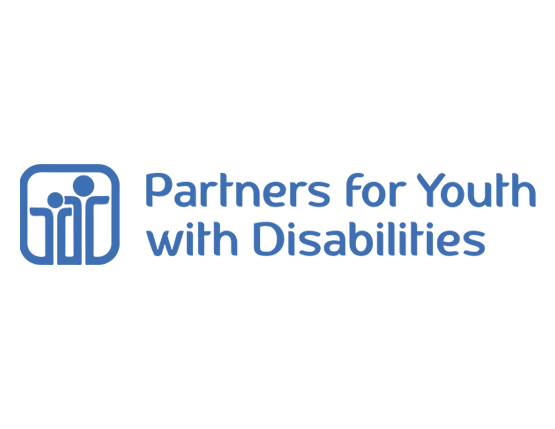In the Media
Flipping the Classroom to Teach Disability Inclusion Practices
January 4, 2019
By Steve Slowinski

When it comes to disability inclusion, PYD’s philosophy is simple: how can we train as many people as possible? If we want to create a world where young people with disabilities can lead lives with dignity, pride, and purpose, we need to make sure as many organizations, communities, and individuals as we can are trained to be fully inclusive of people with disabilities.
Over 2018, we’ve been trying an innovative new approach to reach more organizations. Thanks to funding from the Boston Foundation and a collaboration with the B-SET for Career Network, we established a cohort of around 25 individuals from 17 organizations in the Boston area. These individuals were provided with access to PYD’s online learning platform (p2i.pyd.org), and were expected to take six online courses and attend two in-person convenings over the course of eight months.
The idea was to flip the classroom: have the majority of learning happen online, while using in-person meetings to reflect upon and apply what was learned. This would allow busy youth-workers to fit in the training when it worked within their schedules, and allow for extended, deep learning throughout the year. We called this initial cohort of learners the Boston Inclusion Community for Youth Providers (BICYP).
BICYP was a joint project of the B-SET for Career Network and PYD. B-SET is a Boston based collaboration of Boston Public Schools, human service, municipal and state agencies, businesses, workforce intermediaries, colleges, skills training programs, organized labor and others convened by Massachusetts Advocates for Children and dedicated to expanding access to higher education, occupational skills training and careers for transition aged students and young adults with disabilities.
This model ended up being incredibly successful. We were able to provide over 150 hours of training to our cohort. These 25 individuals showed gains in their own personal inclusion practices, plus many of them were interested in applying what they learned to their workplace and programs.
For example, two trainees (Aiden and Thalia) were from uAspire, a nonprofit that works to ensure that all young people have the financial information and resources necessary to find an affordable path to and through college. Aiden and Thalia started some large changes within uAspire as a result of their participation, including:
- Working with their VP of Equity to bring in a consultant to deliver a disability inclusion training for all staff members, and to conduct an accessibility audit of uAspire’s office space, programs, and trainings.
- Developing a Disability, Ableism, & Language training for uAspire’s direct service staff members.
- Adjusting their language so that all students are referred to their building’s entrance with a ramp when coming in for an in-person appointment. In the past, students were advised to use a non-wheelchair-accessible entrance.
- Suggesting to their Finance and Operations Department to give examples of “reasonable accommodations” in uAspire’s employee handbook.
- Changing “reading time” to “# of words/length of video” on their internal newsletter, in order to not presume anyone’s level or ease of reading.
- Working with their Marketing Director to reevaluate uAspire’s business card design, in order to make a newer and more accessible design.
In their own words, here are some of the key ways specific courses helped them:
“Intro to Disability and Inclusion
This training provided fundamental knowledge. It helped us to think about ableism in our organization and expanding the idea of “what is disability?” In particular, it highlighted how disability can be both seen and hidden and introduced us to the different models of disability. We found that the information around the ADA and reasonable accommodations gave us tangible steps for how we could approach awareness around disability, inclusion, and ableism at our organization. We learned about how to be proactive instead of reactive in terms of providing reasonable accommodations. This training was a catalyst for Aiden to look at our employee handbook to see what our policies were and to start expanding on the idea of reasonable accommodations and what we could learn to do better.
Tips for Inclusive Communication
This training was very important to us because of the day to day nature of our work and how we communicate with students. The training that we put together about “disability, ableism, and language” was heavily informed by this. The tools and information it gave us helped us to create content to relate back to the work that we do here and fortify a tangible first step that everyone at the organization could take no matter where they are in terms of knowledge about disability or ableism.
Universal Design for Learning
This helped in terms of thinking about how all of our internal and external trainings can be different and more engaging to various learning styles. Started thinking about how we can incorporate things like bigger fonts, fidgets, etc. We hope to establish a standard in terms of different forms of engagement that can accommodate the different ways in which people learn.
Inclusive Marketing
Aiden has started working with our Director of Marketing to change our business cards so that they can be more accessible. They’re thinking of changing or playing around with font size, composition, colors, higher contrast, and a cleaner interface that will be less distracting. In terms of other things to change, we are also pushing for captions and subtitles to be available for all videos we are using and presenting to others. In the future, we hope to have accessibility info on the uAspire website in terms of accessibility to getting in and out of the building/our office spaces, providing students with directions to get to our space, and making it clearer for students how they can ask for reasonable accommodations.”
Based on the success of this project, we are hoping to create other learning cohorts using a similar “flipped classroom” model, helping many more organizations improve their disability inclusion practices.